
Folder Lock, developed by NewSoftwares.net, offers an extensive range of customization options, allowing you to tailor the software's behavior to your specific security and privacy needs. Whether you want to adjust how it appears, how it handles sensitive data, or how it integrates with your system, Folder Lock provides granular control through its comprehensive settings.
Steps to Customize Folder Lock Settings
Follow these steps to access and modify Folder Lock's settings:
Step 1: Open Folder Lock and Log In
Begin by launching the Folder Lock application on your computer and log in to your account using your credentials.
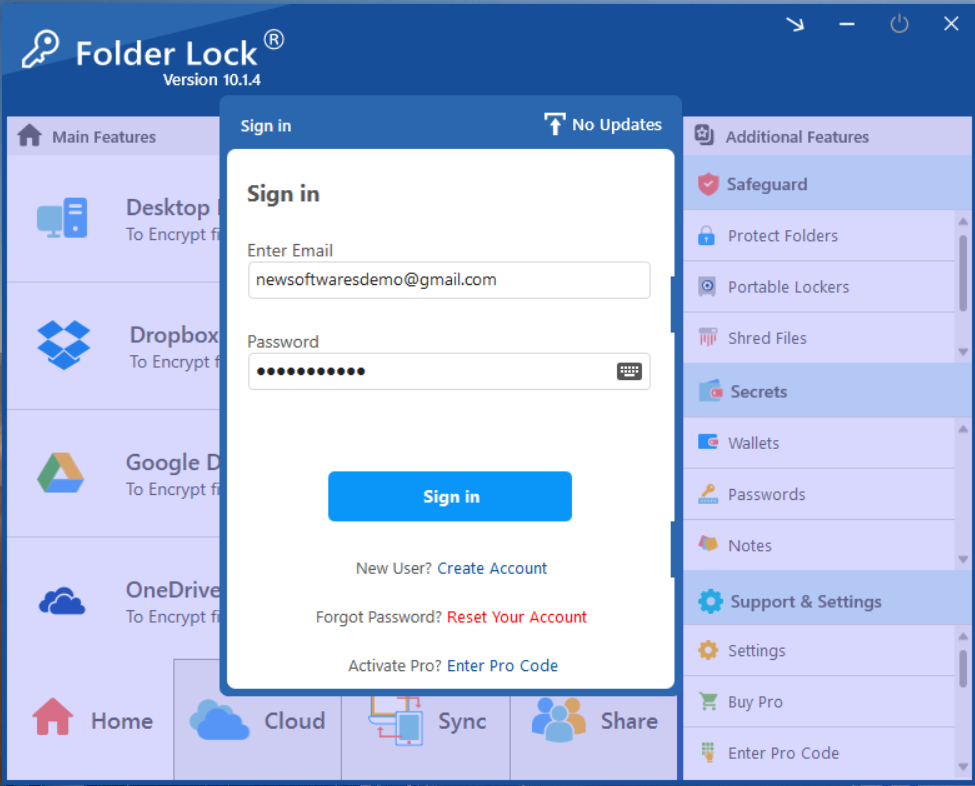
Step 2: Access the Settings Menu
Once logged in, locate and click on the "Settings" option. This is typically found in the bottom right corner of the Folder Lock main window, under the "Support & Settings" section in the right sidebar. This action will open the dedicated Settings window.
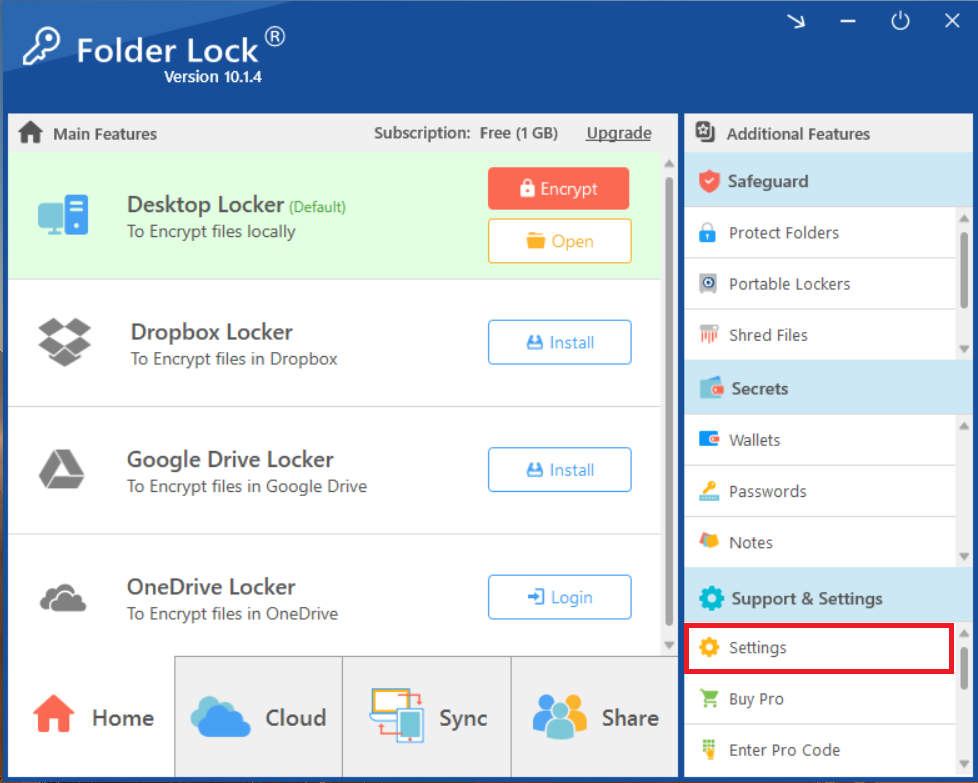
Step 3: Explore and Adjust Preferences
The Settings window presents various categories in the left sidebar, allowing you to modify different aspects of Folder Lock:
1. General Settings
This section allows you to control basic preferences such as whether Folder Lock appears in the Taskbar or System Tray, its behavior on login/logout/exit (e.g., cleaning Windows history, minimizing to system tray), and update options.
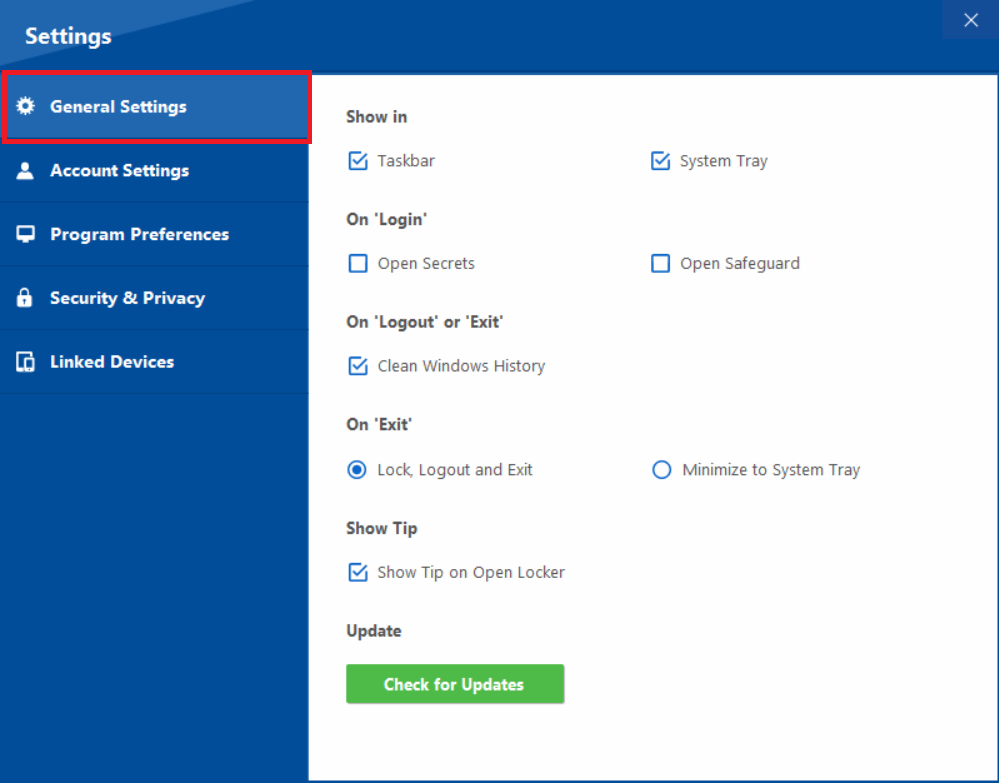
2. Account Settings
Here you can manage your Folder Lock account details, including password changes.
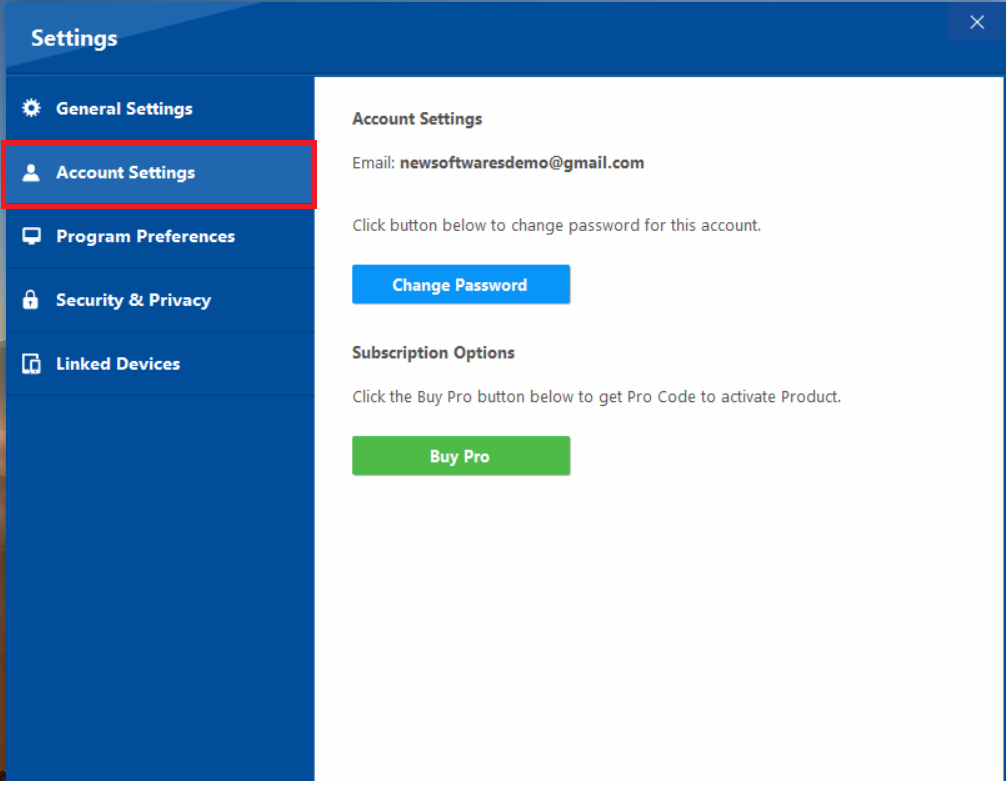
3. Program Preferences
This section offers advanced customization for how Folder Lock operates, including settings for Desktop Lockers, shredding preferences (number of passes, exclusion lists), and direct links to actual locker paths.
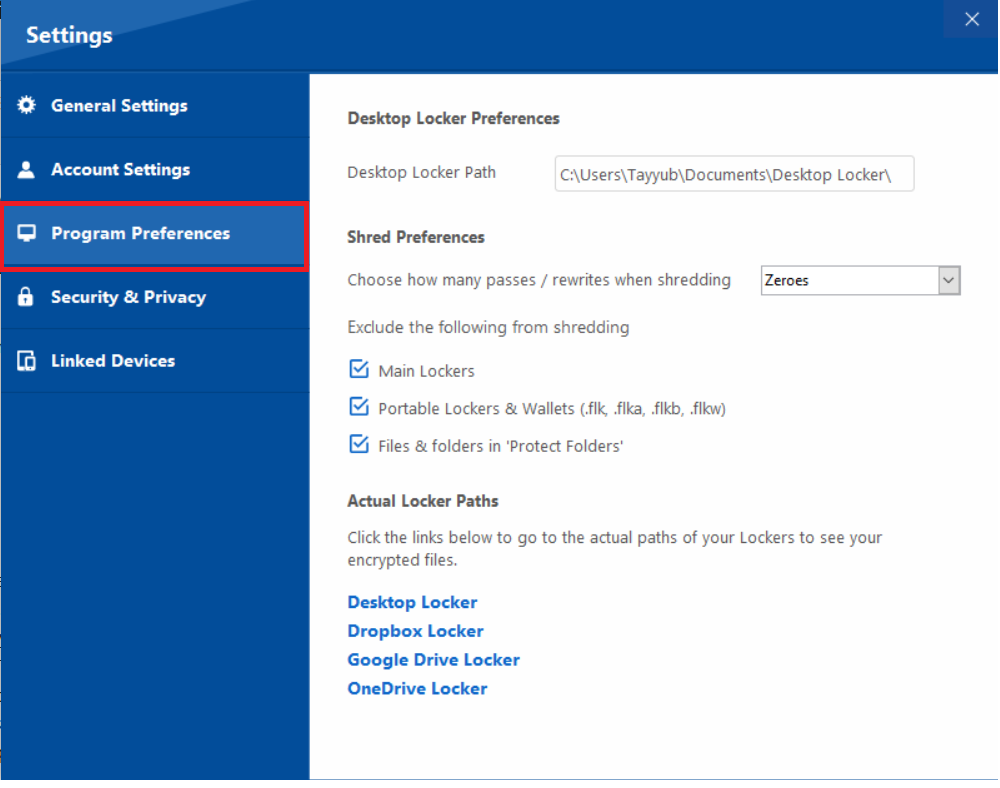
4. Security & Privacy
This crucial section allows you to fine-tune privacy options, such as whether your email address is displayed at login, and to set up password re-entry requirements for accessing specific sections like Share, Safeguard, Secrets, and Settings themselves.
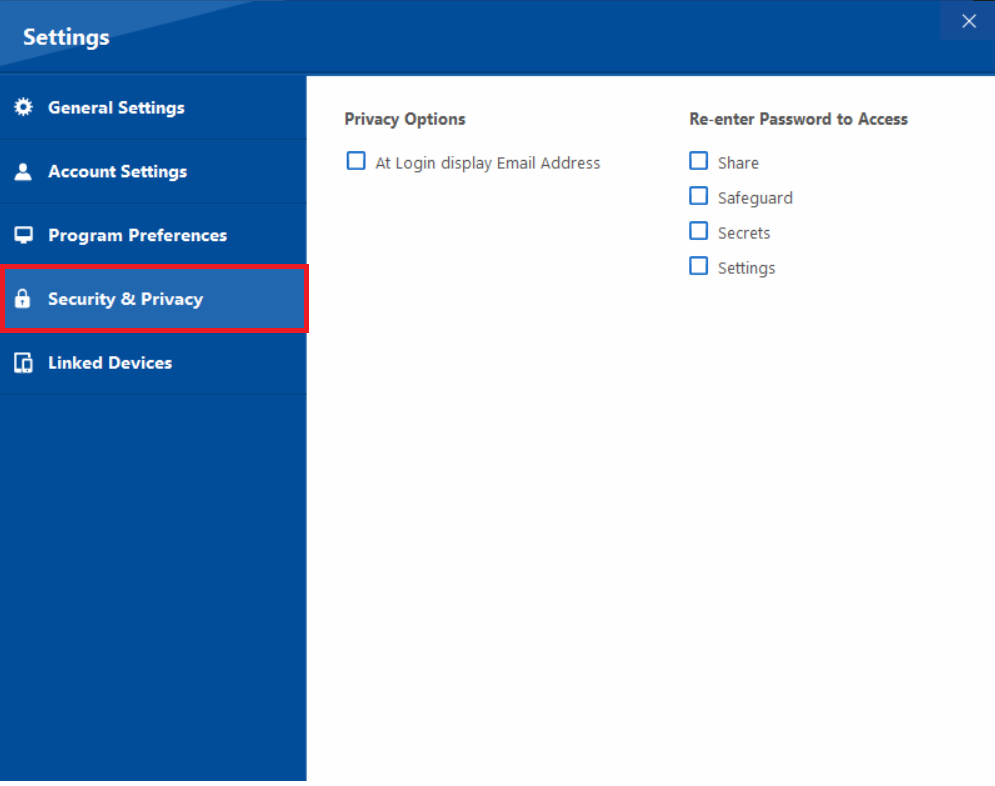
Navigate through these sections by clicking on them in the left sidebar. For each section, review the available options and make your desired adjustments by checking/unchecking boxes, selecting from dropdowns, or entering specific values.
Your Security, Your Rules. Master Your Folder Lock Settings. By following these steps, you can fully customize your Folder Lock settings, ensuring the software operates precisely according to your preferences for enhanced security and a tailored user experience.
